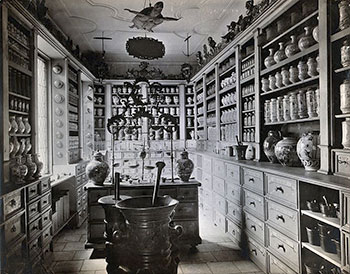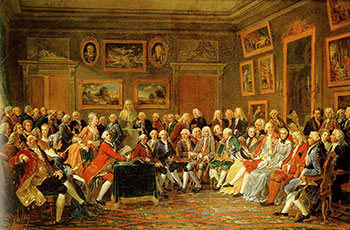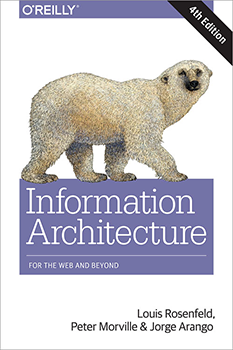
Take the design salary survey
Help us gain insight into the tools, work environments, and salaries of today's designers.
Designers are in demand.You’ve read the stories – IBM hiring 1,000 designers and investing $100 million in user experience design. Companies are fiercely competing for design talent, and poaching has become a way of life for large and small companies alike.
Given the tumultuous design landscape, we’re launching our inaugural Design Salary Survey to help shed some light on the discipline. The goal of our survey is to identify key trends, assess the tools market, and identify what skills correlate with higher salaries.
Additionally, our survey will shed light on design titles. There is plenty of debate over job titles in the field. The nebulous nature of job titles is both confusing and distracting — interaction designer, UX designer, experience designer, product designer, and the list goes on. Our survey will classify the titles by responsibilities, and identify trends, tools, and what pays (and what doesn’t).
We’ll also be taking a close look at the design tools market. New tools are emerging everyday — it’s no longer a one pony show with Adobe owning the market. The options are so abundant and overwhelming, Khoi Vinh recently conducted a survey of the design tools space. Survey results showed a mix of both newcomers and old-school tools, illustrating the dynamic nature of the market. Read more…

Understanding the experience design of consumer IoT products
Great UX for IoT requires cross-discipline collaboration between design, technology, and business.
Download a free copy of our new report “User Experience Design for the Internet of Things,” by Claire Rowland, to learn about a framework for understanding the UX of consumer IoT products. Note: this post is an excerpt from the report.
 When we think of design for connected products, we tend to focus on the most visible and tangible elements. These are the industrial design of connected devices, and the user interfaces (UIs) found in mobile and Web apps and on the devices themselves.
When we think of design for connected products, we tend to focus on the most visible and tangible elements. These are the industrial design of connected devices, and the user interfaces (UIs) found in mobile and Web apps and on the devices themselves.
They are important concerns, which have a major impact on the end user’s experience of the product. But they’re only part of the picture. You could create a beautiful UI, and a stunning piece of hardware, and users could still have a poor experience of the product as a whole.
Designing for IoT is inherently more complex than Web service design. Some of this is to do with the current state of the technology. Some of this reflects our as-yet immature understanding of compelling consumer IoT value propositions. Some of this stems from the fact that there are more aspects of design to consider. Tackling them independently creates an incoherent user experience (UX).
Designing a great connected product requires a holistic approach to user experience. It spans many layers of design, not all them immediately visible. More than ever, it requires cross-discipline collaboration between design, technology, and business. Great UX may start with understanding users. But the designer’s ability to meet those users’ needs depends on the technology enablers, business models, and wider service ecosystem. Read more…

Design for the greater good
The O’Reilly Design Podcast: Gretchen Anderson on designing for social impact.
Subscribe to the O’Reilly Design Podcast, our podcast exploring how experience design — and experience designers — are shaping business, the Internet of Things, and other domains.
 In this week’s Design Podcast episode, I sit down with designer Gretchen Anderson. Anderson is the author of the free O’Reilly report Designing for Social Impact and a program committee member for OReilly’s inaugural design conference, where she is also moderating a panel on designing with data for social impact.
In this week’s Design Podcast episode, I sit down with designer Gretchen Anderson. Anderson is the author of the free O’Reilly report Designing for Social Impact and a program committee member for OReilly’s inaugural design conference, where she is also moderating a panel on designing with data for social impact.
In this podcast episode, Anderson talks about design as a force to improve our lives and about approaching design as an inclusive discipline.
Here are a few highlights from our chat:
Forget the color palette conversations. Stop trying to make everyone understand the craft of design any more than they want to — just take your seat at the table. Greg Petroff talks about how designers can be a little bit paranoid by nature. I think that comes with the territory. There can be a lot of ‘us and them’ — I think it’s important to really drop that way of thinking. Not everyone does what you do, but that does not mean that you aren’t part of a larger ecosystem; you want to foster that creative part of bringing everyone together.
Design is about finding and testing and being able to hold a point of view on what people need and want, whatever your mission or enterprise is, and being someone who can reconcile constraints into something awesome, not just the sad compromise of everyone’s democracy. Have the bravery and the skills to hold that and the relentless passion and patience for refinement of an idea, even the bad ones sometimes.

Design for understanding
How Information Architecture helps create environments that are understandable and useable by human beings.
Register for the O’Reilly Design Conference, which will be held January 19-22, 2016, in San Francisco. Jorge Arango will be speaking at the event about information architecture and semantic environments.
Editor’s note: This post is an excerpt from “Information Architecture, 4th Edition,” by Jorge Arango, Louis Rosenfeld, and Peter Morville.
We only understand things in relationship to something else. The frame around a painting changes how we perceive it, and the place the frame is hanging in changes it even more: we understand an image displayed in New York’s Museum of Modern Art differently than one hanging in a shared bathroom in a ratty hotel. Context matters.When designing an information architecture, we are engaging in a new type of placemaking: one that alters how we perceive and understand information. As with (building) architects, information architects are concerned with creating environments that are understandable and useable by human beings, and which can grow and adapt over time to meet their needs and those of their organizations.
In the previous chapter, we saw how the lens of information architecture can help designers make stuff easier to find by setting it in structures made of language. Now, we’ll explore how these structures can make stuff more understandable by molding the context that we perceive it in.
A sense of place
You get out of bed. You stumble clumsily to the bathroom for a morning toilet, then walk to the kitchen to brew a cup of coffee and toast some bread. It’s not even 6 a.m. yet, and you have already transversed three distinct places with different uses and configurations: bedroom, bathroom, and kitchen. Read more…

Survey says: Be promiscuous with your design tools
A look at results and insights from Khoi Vinh’s design tools survey.
Editor’s note: Khoi Vinh is a member of the program committee for O’Reilly’s Design Conference. Registration is now open — reserve your spot today.
 Khoi Vinh recently released his inaugural design tools survey. Vinh has been following the tools ecosystem for some time, and recently announced he will be joining Adobe. The survey focuses on six tasks designers manage: brainstorming, wireframing, interface design, prototyping, project management, and version control and file management.
Khoi Vinh recently released his inaugural design tools survey. Vinh has been following the tools ecosystem for some time, and recently announced he will be joining Adobe. The survey focuses on six tasks designers manage: brainstorming, wireframing, interface design, prototyping, project management, and version control and file management.
What jumped out at me? It’s a mixed bag, just as I expected. Pen and paper continues to be a key communication tool. I wasn’t surprised by the popularity of HTML and CSS, or Invision, but I was surprised by the lower ranking for Axure. It’s refreshing to see the investment in the design tools space, even if it the choices can seem overwhelming. Let me know what you think in the comments below or through Twitter (@marytreseler).
I sat down with Vinh to discuss the tools market and, specifically, the results and thinking behind his survey.
What prompted you to develop the tools survey?
The past two or three years have just been incredibly interesting for software geared toward digital designers. We’ve seen a slew of new contenders, and a whole new category — UX prototyping — where we get brand new apps seemingly once a month. So, I wanted to try to shed some light on all of this activity and get a sense of how these new applications are getting adopted, and by whom.
What were your findings?
At a high level, I found that it’s a very diverse market, which is itself a real statement. A decade ago, most everyone used Adobe’s tools for almost everything. Now you have up-and-comers like Sketch (from Bohemian Coding) and InVision both really taking hold in the market. Some categories have no clear winner, like prototyping. I think it’s all really exciting. Read more…

Reconciling design thinking with the craft of design doing
The O'Reilly Radar Podcast: Suzanne Pellican on the ups and downs of Intuit's journey to become a design-driven organization.
Subscribe to the O’Reilly Radar Podcast to track the technologies and people that will shape our world in the years to come.
In this week’s episode, O’Reilly’s Mary Treseler chats with Suzanne Pellican, VP and executive creative director at Intuit, about three core principles of design thinking and about Intuit’s journey to become a design-driven organization.
Pellican also will be speaking at our upcoming O’Reilly Design Conference about creating a culture based on design thinking, experimentation, and risk taking. You can find out more at the event website.
Here are a few highlights from their chat:
Design thinking is the practice of problem solving, and to me, that is based on those three core principles that I spoke about: deep customer empathy, going broad to go narrow, and rapidly experimenting with your customer. That’s the actual skill set and the tools and the mindset that you have.
Design thinking is absolutely experiential, and I think the first mistake that we made when we started rolling this out eight years ago was, if you’re going to change the way people work day to day, that’s going to take a long time. You can’t just ask people to do it and expect them to change. You have to give them ample opportunities to practice so that they can then understand it and make it their own.


